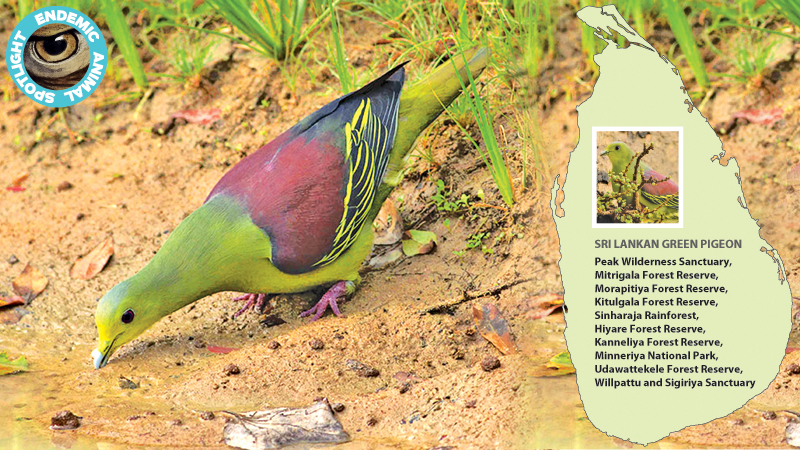
Have you ever seen a slender bird dressed in green, flying silently through the trees? And wandered who that green beauty was? Well, you might have just spotted our very own Sri Lanka green pigeon, sometimes called Pompadour green pigeon, while its scientific name is Treron pompadora. This special bird is found only in our beautiful island of Sri Lanka, making it a very special part of our wildlife. Let’s flap into its world and learn more.
What does it look like?
The Sri Lankan green pigeon is about the size of a normal pigeon but much more colourful. Its body is mostly bright green which helps it to hide amongst the leaves. The male pigeon has a lovely purple-brown patch on its back, while the female is mostly green all over. Both have red feet, a blue-grey beak, and soft yellowish bellies. When the sun shines on them, they look just like tiny flying jewels.
Where does it live?
This green pigeon lives in forests, woodlands, and sometimes even in big gardens or plantations. You can spot the bird in places like, Peak Wilderness Sanctuary, Mitrigala Forest Reserve, Morapitiya Forest Reserve, Kitulgala Forest Reserve, Sinharaja Rainforest, Hiyare Forest Reserve, Kanneliya Forest Reserve, Minneriya National Park, Udawattekele Forest Reserve, Willpattu and the Sigiriya Sanctuary. It likes tall trees where it can stay safe, build nests, and find fruit to eat. The bird is usually found alone or in small groups, but when there’s a lot of fruit around, many of them gather together to feast on the fruit.
What does it eat?
This pigeon is a fruit-lover. It eats fruits like tiny wild berries, and other soft forest fruits. It also nibbles on buds, young leaves, and sometimes even on moss.
While eating, it helps spread seeds across the forest. That means the Sri Lankan green pigeon is a preserver of nature, planting and spreading new trees and keeping the forest healthy.
Baby birds and nests
When it’s time to raise a family, the green pigeon builds a simple nest out of twigs high up in the trees. The mother pigeon lays two white eggs, and both parents take turns keeping them warm. After about two weeks, the chicks hatch and are looked after with lots of love and food. Their breeding season is usually from December to June, when the forest is full of food and sunshine.
Why should we care?
Even though the Sri Lankan Green Pigeon is not endangered, its home—the forest—is slowly disappearing. Cutting down trees and clearing land for buildings or farms makes it harder for the pigeon to find food and raise chicks.
By protecting our forests, planting trees, and learning about special birds that live only in Sri Lanka, we can help keep Sri Lankan birds like the Sri Lankan green pigeon flying safe and free in our wild forests. So the next time you visit our National Parks keep your eyes wide open for this little green beauty. It might be hiding among the treetops and quietly cooing and munching on its favourite fruit.
****
Fun fact-in a box
Did you know that when this pigeon flies, its wings make a special flicking sound? Its flight is fast and straight—just like a little green rocket zooming through the trees.






